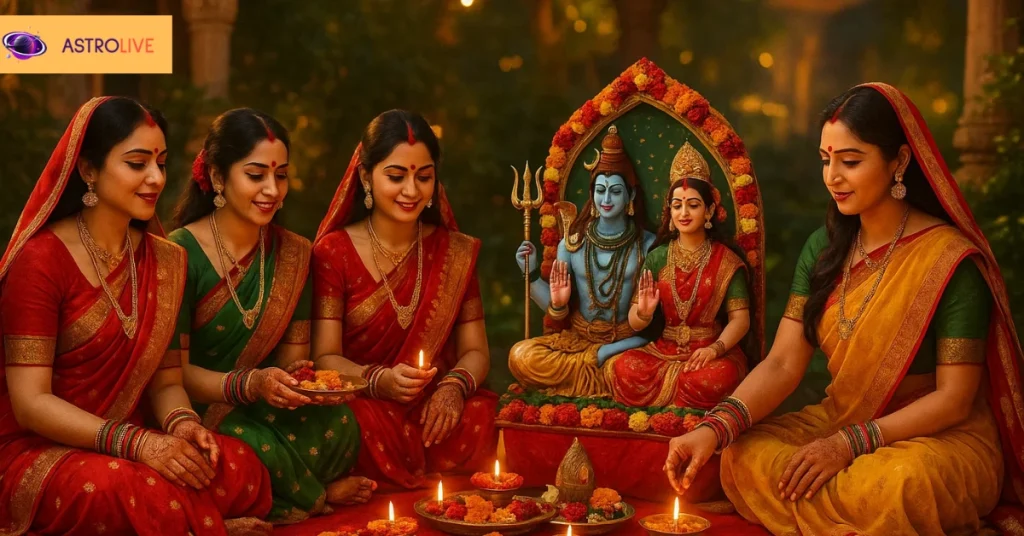Among the many vibrant and spiritually rich festivals of India, Haritalika Teej holds a deeply revered place. Hindu women across northern and central India primarily observe this sacred day through strict fasting, traditional rituals, and heartfelt prayers to Goddess Parvati and Lord Shiva.
This festival beautifully blends divine mythology with feminine faith, making it not only a cultural observance but also a spiritual journey for many.
What Is Haritalika Teej?
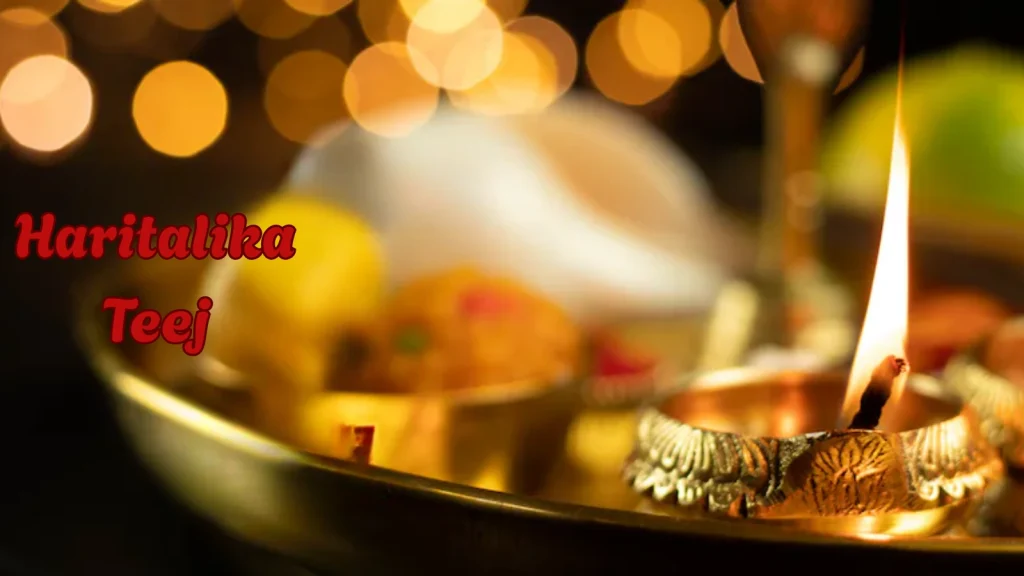
This deeply revered Hindu festival is predominantly celebrated by women in Rajasthan, Uttar Pradesh, Madhya Pradesh, Bihar, and especially in Nepal. Women observe it during the Shukla Paksha Tritiya of the Bhadrapada month, according to the Hindu calendar.
It is different from Hariyali Teej, which is celebrated earlier in the month of Sawan.
Women observe a strict fast and pray for marital bliss, the well-being of their husbands, and a harmonious family life. Unmarried girls also take part in the rituals, praying for a good life partner blessed with qualities similar to Lord Shiva.
Unlike other fasts, this one is known for its strictness; women neither drink water nor consume food for a full 24 hours. But the spiritual purpose and sense of devotion empower them to complete the fast with enthusiasm.
When Is Haritalika Teej Date In 2025?
In 2025, Teej will be celebrated on Tuesday, 26th August 2025. This sacred day is observed on the Tritiya Tithi of Shukla Paksha during the Bhadrapada month.
- Tritiya Tithi Begins: Monday, 25th August at 5:35 PM
- Tritiya Tithi Ends: Tuesday, 26th August at 3:50 PM
- Pratahkal Puja Muhurat: 6:00 AM to 8:45 AM on Tuesday
Women who observe the Haritalika Teej vrat should perform the puja during the morning hours (Pratahkal) of Tritiya Tithi. They should also consult the local Panchang to determine the exact sunrise-based muhurat.

The Spiritual Significance Of Haritalika Teej
Haritalika Teej is a day of fasting, prayer, and invoking divine blessings for a long, blissful married life. While married women observe the vrat to ensure the longevity and prosperity of their husbands, unmarried girls perform the rituals hoping for a loving and virtuous life partner.
Unlike many other fasts, this one is observed without water or food. This nirjala vrat symbolizes the height of devotion, resilience, and feminine willpower.
What sets this festival apart is its deep connection to Goddess Parvati’s penance, which reflects unwavering commitment and spiritual strength.Just like the Sawan Somwar fasts observed by Shiva devotees throughout the monsoon month, Haritalika Teej reflects deep dedication and spiritual resolve, especially from a feminine perspective.
By emulating her sacrifice, women not only seek blessings for marital harmony but also align themselves with the divine feminine energy. The vrat is believed to cleanse the mind, body, and soul, making it both a religious and spiritual act of transformation.
Also Read: What Makes Hariyali Teej So Special? Rituals & Significance
The Legendary Story Behind Haritalika Teej
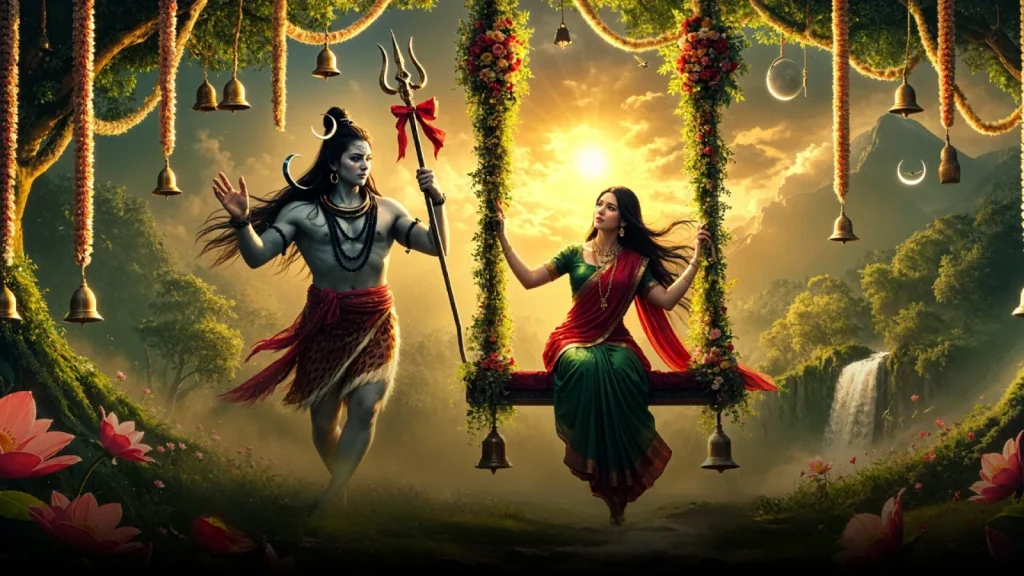
The haritalika teej ki kahani is a powerful story that illustrates divine love, patience, and determination. According to ancient Hindu scriptures, Goddess Parvati deeply desired to marry Lord Shiva. However, her father, King Himavan, unaware of her wishes, decided to marry her off to Lord Vishnu.
To stop the unwanted marriage, Goddess Parvati’s close friend took her away into a dense forest. There, the goddess performed rigorous penance and meditated with unwavering focus. She endured harsh conditions but never wavered in her desire to win Lord Shiva’s heart.
Moved by her unwavering devotion, Lord Shiva ultimately appeared and consented to marry her. Their union is regarded as one of the most sacred in Hindu mythology. This story forms the essence of the Haritalika Kahani and is an integral part of the puja rituals.
What Are The Rituals And Pooja Vidhi Of Haritalika Teej?
The haritalika teej pooja vidhi is a sacred process that symbolizes deep devotion to Goddess Parvati and Lord Shiva. Women observe these rituals with utmost sincerity, dressed in festive attire and adorned in traditional ornaments. Here’s how the rituals unfold:
Traditional Preparation:
Women begin the day by bathing and dressing in red, green, or yellow outfits. Mehndi (henna) is applied on hands, and they wear bangles, sindoor, and jewelry as part of their shringaar.
Clay Idol Creation:
As part of the Haritalika Teej pooja vidhi, women prepare or purchase clay idols of Lord Shiva and Goddess Parvati, then decorate them with flowers and other sacred items.
Puja Setup:
Women clean the area thoroughly before starting the rituals. They then spread a red cloth on a wooden platform (chauki) and place the idols of Lord Shiva and Goddess Parvati on it.
Offering Rituals (Samagri):
Devotees offer Bel leaves, dhatura, lotus flowers, seasonal fruits, sweets, halwa, and kheer as prasad to Lord Shiva and Goddess Parvati.
Aarti and Bhajans:
Devotees light diyas and incense sticks, perform aarti, and sing bhajans or chant Shiva-Parvati mantras.
Storytelling (Katha):
Listening to or narrating the haritalika teej ki kahani is a mandatory part of the ritual, reinforcing the spiritual significance of the day.
Jagran (Night Vigil):
Many women engage in night-long devotional singing and storytelling sessions, staying awake as a mark of dedication.
It is also important to consult the local Panchang to determine the precise sunrise-based muhurat for performing the puja with full sanctity.
Check Auspicious Timings With Today’s Panchang
Haritalika Ki Puja: A Blend Of Faith And Tradition
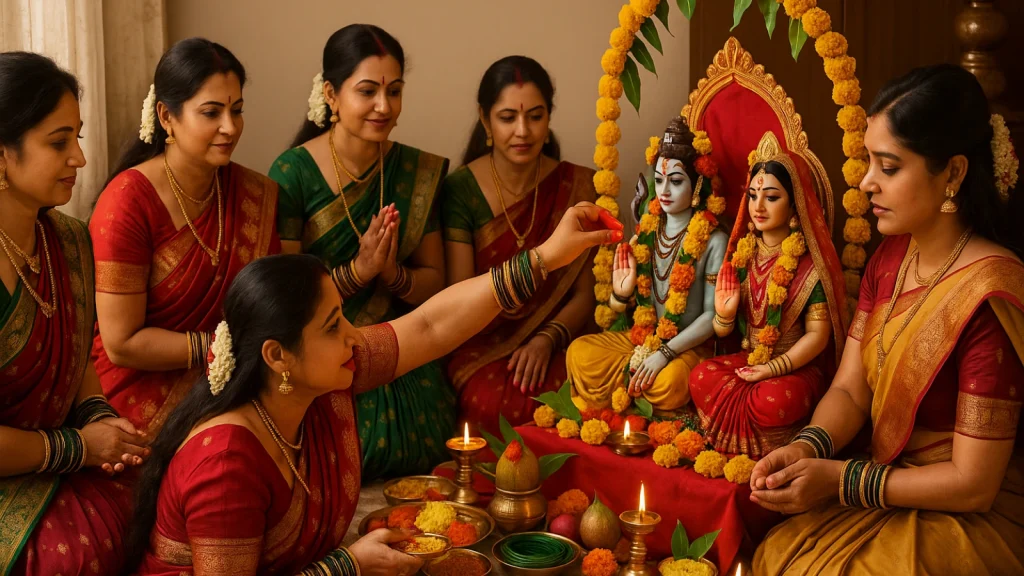
The haritalika ki puja is a grand and symbolic event. It’s not just a set of rituals but a spiritual experience that connects women with their divine feminine energy. Many temples are beautifully decorated, and some communities organize collective prayers, fostering a sense of togetherness and shared devotion.
Women often come together in groups, singing traditional folk songs, dancing, and celebrating the occasion with great enthusiasm and joy. Some even participate in community events where priests narrate the mythological tale behind the fast, reinforcing its cultural and emotional significance.
Also Read: What Makes Savan Somvar Vrat So Powerful In 2025?
What Is The Role Of Mehndi And Traditional Attire?
Applying mehndi (henna) is considered auspicious during this festival. Women showcase their creativity by adorning their hands and feet with intricate mehndi designs. It is believed that the darker the henna stain, the deeper the love between the couple.
New sarees, lehengas, or salwar suits are worn, often complemented with traditional jewelry like mangalsutra, bangles, earrings, and nose rings. This celebration of beauty is not just ornamental, it’s symbolic of happiness, fertility, and devotion.
Regional Variations And Cultural Celebrations
Though the essence of Haritalika Teej remains consistent, various regions add their flair to the celebration:
- In Nepal, the festival is a national holiday. Women gather at temples like Pashupatinath to offer prayers and dance in large groups.
- In Rajasthan, women celebrate the festive spirit by singing folk songs and swinging on beautifully decorated swings hung from trees in vibrant, green gardens.
- In Bihar and UP, the focus remains on the strict fasting, storytelling, and offering prayers in traditional households.
How Haritalika Teej Vrat Empowers Women Spiritually?
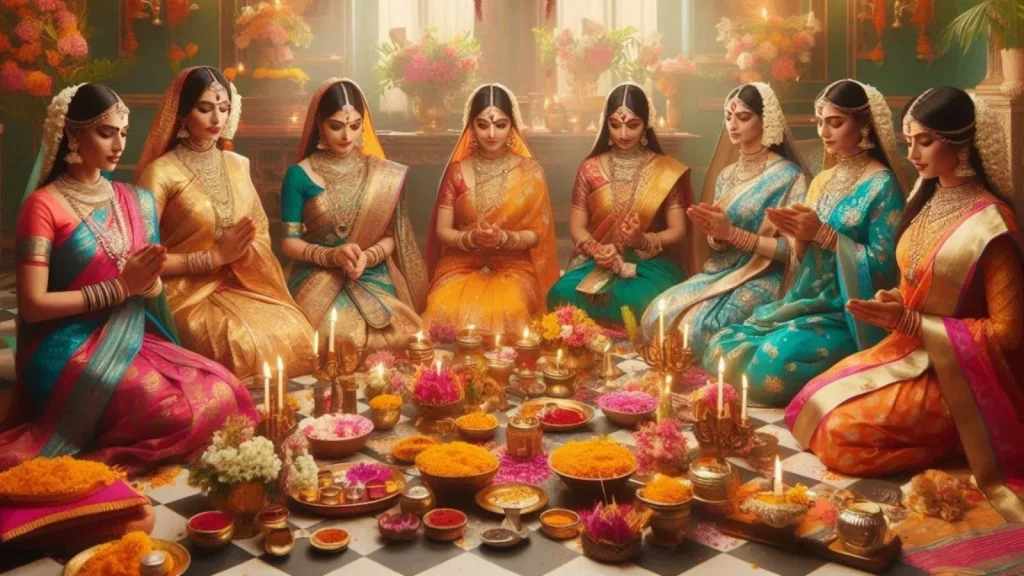
More than a religious observance, the haritalika teej vrat is a profound expression of women’s empowerment. It reflects a woman’s spiritual strength, patience, and unwavering loyalty. Through this intense fast, observed without food or water, women demonstrate deep inner resilience and devotion.
The vrat becomes a medium to connect with one’s higher self, practice self-control, and channel divine feminine energy. Beyond its spiritual significance, the celebration also offers a space for women to bond socially, share cultural traditions, and pass down rituals to younger generations..
The vibrant atmosphere, rooted in values like love, sacrifice, and strength, transforms the haritalika teej vrat into an inspiring and empowering celebration of womanhood.
Why Haritalika Teej Still Matters in Modern Times?
Amid the rush of modern life, festivals like Haritalika Teej allow us to pause and reflect. They are reminders of the values that define lasting relationships, loyalty, sacrifice, patience, and faith.
This sacred day encourages women to connect not just with Goddess Parvati, but also with their inner spiritual self. It revives age-old traditions and bonds families across generations.

Final Thoughts
Haritalika Teej is not just a celebration; it is a spiritual commitment, a symbol of unwavering love and divine blessings. Whether you’re observing the teej vrat or participating in the rituals, the energy of the day brings calmness, strength, and harmony.
As the Tithi and Muhurat approach on 26th August 2025, may you immerse yourself in devotion, listen to the sacred Haritalika Kahani, and strengthen the beautiful bonds in your life.
For personalized muhurat timings, detailed pooja vidhi, or astrological guidance this Teej, consult expert astrologers on AstroLive and celebrate with clarity and confidence.


